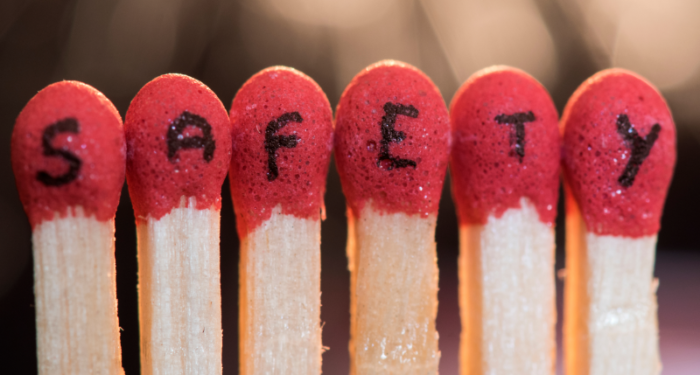Colin Gillespie, Director of Loss Prevention at North P&I Club, provides an overview of how safety culture is implemented in maritime companies, focusing mostly on the difficulties that organizations have to encounter in order to implement an actual safety culture.
1. A CEO makes a statement that safety is the way we do business going forward
2. A mission statement around “safety vision” is written
3. Stretch KPIs – very low numbers LTIFs or zero incidents – are created
4. Communicate to all employees, extolling the safety vision
5. A comprehensive safety management system exists or is produced
6. Staff are trained in systems and procedures important to safety
7. Safety culture flourishes in the company
But the reality is much different. Safety culture can be likened to a rare orchid – delicate, hard to grow and in need of constant tending and nurturing in the face of a harsh environment.
Let’s look at some of the elements that contribute to difficulties implementing safety culture.
Challenges in nurturing a safety culture
Safety and commerce do not tend to coexist easily. It’s a big step for a company to fully commit to safety as their way of business. Commercial pressures around costs and vessel schedules will inevitably put pressure on the commitment to safety. Individuals or departments within a company may occasionally respond to these pressures by making exceptions and prioritise commerce over safety. This can be corrosive to a safety culture as employees may perceive that the company is not really committed to safety as its way of business. This can be particularly destructive if a safety culture programme has recently started.
The societal expectations of shipping allow continued safety failings. Society has zero tolerance for airline accidents but shipping accidents are routinely accepted. This undoubtedly has a negative impact on the shipping industry’s approach to safety culture. The nearest equivalent in shipping to a ‘zero tolerance’ attitude is the tanker sector. Tanker operators are required to operate safely by their commercial partners. This zero tolerance attitude from the customer means that safety and commerce go hand in hand and it’s no coincidence that the tanker sector operates more safely than other sectors.
Human nature does not necessarily lend itself to safe behaviour. Enclosed space accidents are a good example of this. Those involved are often experienced seafarers, usually conscious of the potential risks and aware of the entry procedures. But still they enter. What motivates this clearly unsafe behaviour? Are they thinking “I’ve done it before and it was OK”? Or “I’ve got to get the job done now so we can start loading”? Surely they are not thinking “I will put my life in danger today”? Training can help this situation but it needs unsafe behaviours to be challenged at all times and become unacceptable at all levels within companies. This requires a culture of open communication – again difficult to achieve in a hierarchical company structure and can often be complicated by cultural preferences.
Safety management systems (SMS) can be overly long and complex in their use of language, making them difficult to use. To some extent these systems are a victim of their own success. They have been an extremely effective tool for companies and seafarers to manage their vessels. But documentation can often run to hundreds of pages and tens of thousands of words – too much for anyone to easily digest. If a system is difficult to use this leads to workarounds or procedures being ignored. Recently a number of companies have taken steps to re-write and re-structure their SMS with a focus on making them accessible to the end user i.e. the seafarer. This is something we at North refer to as sensible systems.
The custodians of safety, the DPA and others in the HSQE department tend to be highly capable and competent on the technical aspects of running a ship, and the associated SMS. But usually they will lack any formal training in human behaviours. Naturally this means that most will favour a technical approach to safety and see safety as part of system that can be fixed. If something goes wrong, the incident is analysed and very often procedural changes will be made to put more barriers in place to prevent recurrence. But very often the analysis of the human side of things amounts to “failure to follow procedures” or the even less helpful “human error”. It is rare that questions are asked of the individuals involved as to why they behaved as they did. Such questioning can be invaluable in supporting a safety culture. There are many other brakes on safety culture including the highly fragmented nature of the industry and the nature of and pressures on seafarer employment.
Balancing systems and people: All of these factors combined mean that for an individual company to be successful in nurturing a safety culture through to maturity they must be highly committed to developing the safety culture across the whole organisation and very mindful of the difficulties that can hamper their efforts. For safety culture to flourish, companies must balance a systems approach to safety management with a person-centric approach to safety management. Over time, with care and hard work this can develop into a safety culture which allows safer, incident free (or at least incident light) and more efficient operations. So perhaps safety and commerce can coexist easily after all?
The time for Safety Management 2.0 is now.
Above article has been initially published in North Club’s website and is reproduced here with the author’s kind permission.
The views presented hereabove are only those of the author and not necessarily those of SAFETY4SEA and are for information sharing and discussion purposes only.































































